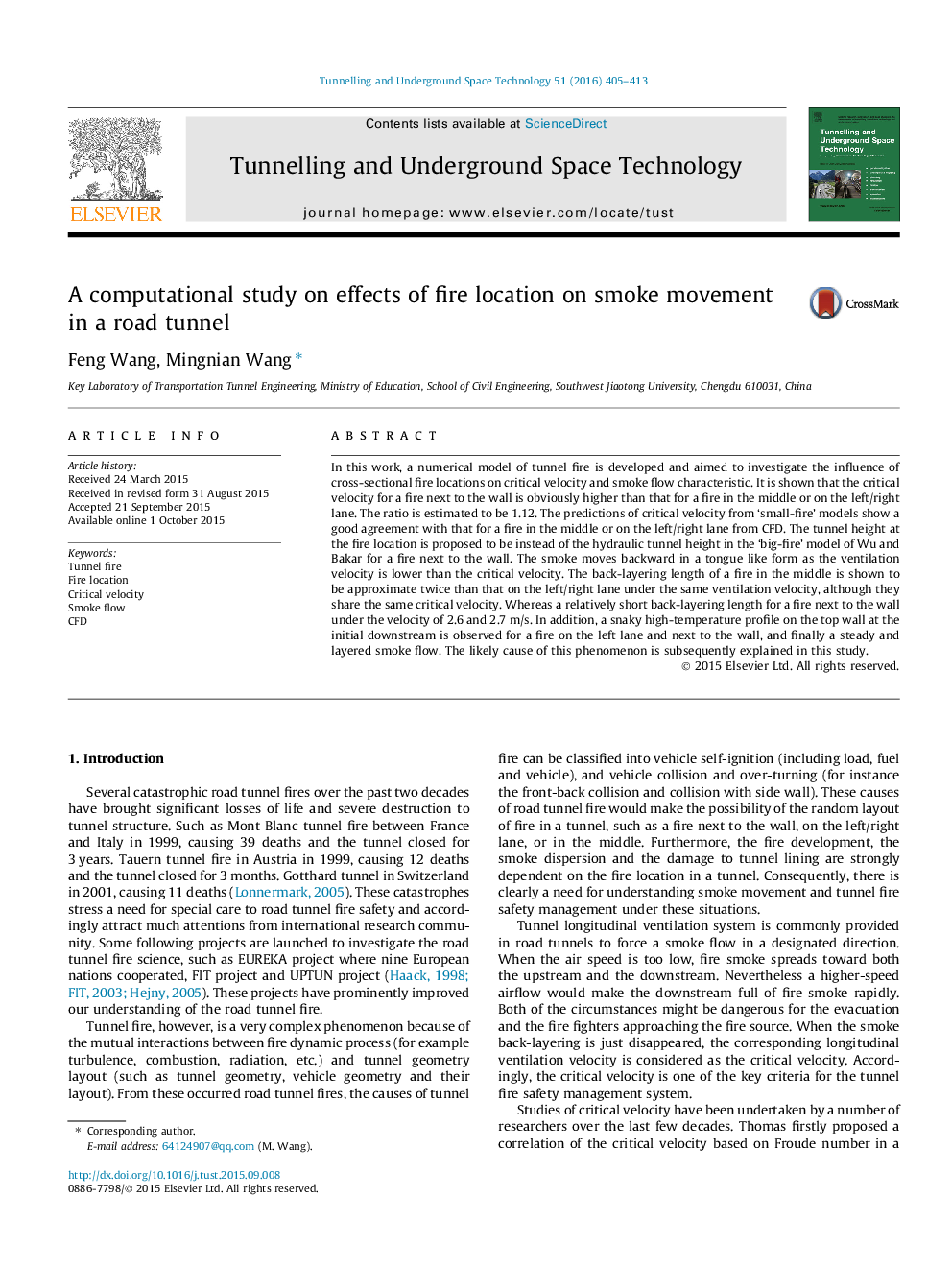| Article ID | Journal | Published Year | Pages | File Type |
|---|---|---|---|---|
| 311755 | Tunnelling and Underground Space Technology | 2016 | 9 Pages |
•This study is focused on effects of cross-sectional fire location in a road tunnel.•Significant differences in smoke movement are found.•A modified model of critical velocity is proposed for a fire next to the wall.•The likely cause of this phenomenon is explained in this study.
In this work, a numerical model of tunnel fire is developed and aimed to investigate the influence of cross-sectional fire locations on critical velocity and smoke flow characteristic. It is shown that the critical velocity for a fire next to the wall is obviously higher than that for a fire in the middle or on the left/right lane. The ratio is estimated to be 1.12. The predictions of critical velocity from ‘small-fire’ models show a good agreement with that for a fire in the middle or on the left/right lane from CFD. The tunnel height at the fire location is proposed to be instead of the hydraulic tunnel height in the ‘big-fire’ model of Wu and Bakar for a fire next to the wall. The smoke moves backward in a tongue like form as the ventilation velocity is lower than the critical velocity. The back-layering length of a fire in the middle is shown to be approximate twice than that on the left/right lane under the same ventilation velocity, although they share the same critical velocity. Whereas a relatively short back-layering length for a fire next to the wall under the velocity of 2.6 and 2.7 m/s. In addition, a snaky high-temperature profile on the top wall at the initial downstream is observed for a fire on the left lane and next to the wall, and finally a steady and layered smoke flow. The likely cause of this phenomenon is subsequently explained in this study.
